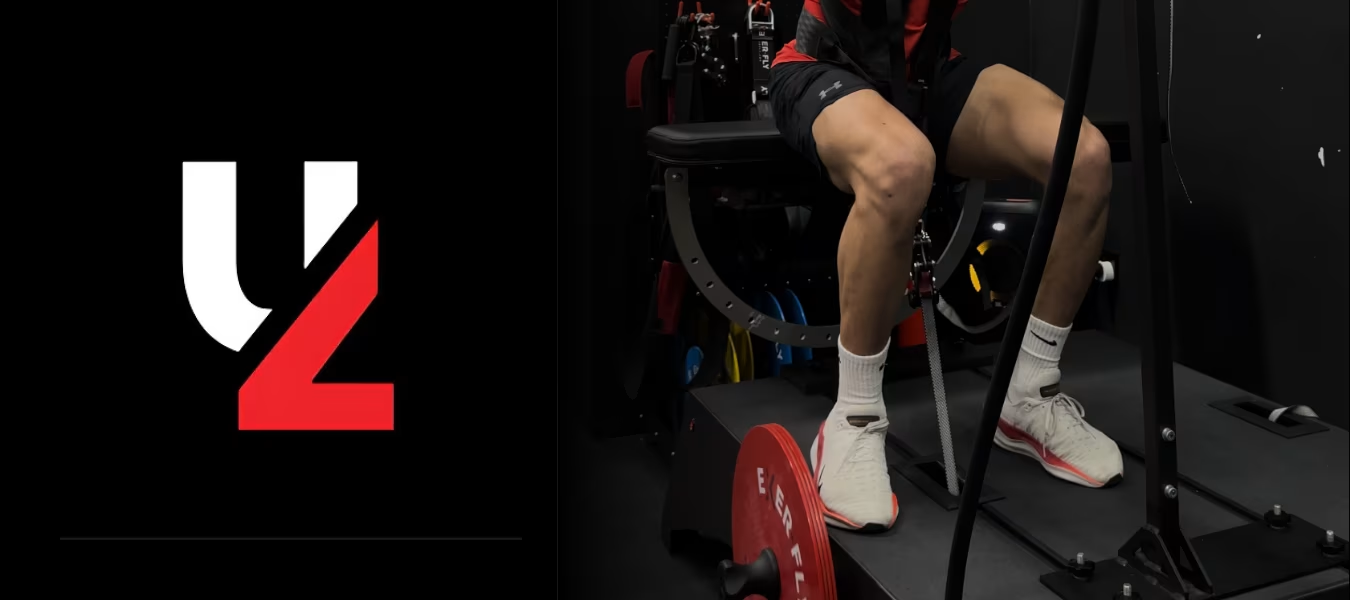

Exerfly's equipment is proudly crafted in the USA, featuring premium manufacturing standards that ensure top-tier performance, durability, and quality for every user.


This case study is an analysis of a 10-month rehabilitation phase for an Anterior cruciate ligament injury, using Exerfly’s Flywheel Technology to target several crucial components for a proper recovery protocol.
To be able to reconstruct the ACL, a hamstring graft was used during the procedure. Therefore, it was crucial to be able to rebuild stronger the affected side, which in such case was the right side.
Post-operation, the athlete was first referred to a specialised sports doctor to make sure that everything was undergone perfectly. Later, he was followed up by a physiotherapist to be able to regain his full range of motion and started working upon his early-stage rehab protocol. The athlete was referred to our facility around the 4th month stage post-operation.
The athlete was assigned to a program and trained for 4 times per week in our facility. We progressed stage to stage utilizing VALD’s athlete testing eco-system, Biodex assessments and several other testing procedures conducted by a physiotherapist.


During the 7-month rehabilitation progression at Urban Zone the focus of the program was centered around utilizing Exerfly Motorized Platform and Rackfly.
We chose Exerfly’s systems as the core foundation of the rehab programme as we firmly believe in the equipment and the benefits of eccentric overload (EO). Flywheel resistance training (FRT) uses a rotating flywheel to generate resistance, where the force applied during the concentric phase (pull or push) determines the resistance during the subsequent eccentric phase. This makes it uniquely suited to EO because the flywheel naturally emphasizes eccentric loading.




This rehabilitation programme was completed using a mix of several training methods, such as traditional strength and power training, iso-kinetic training, isometric training. However, iso-inertial training (FRT) via the Exerfly Systems mentioned above, were at the core of getting the athlete back to high performance levels and return to play.
Below you will see results from assessments made on crucial muscle groups during the rehab process:
Hamstring Assessments started around 8th month of rehab, since there was a huge discrepancy at first, we decided to first strengthen them as much as we could before assessment. In fact, our first assessment was based isometrically. It can easily be noted that although the athlete had his injury on the right side, he worked a lot on the affected side, therefore it got stronger than the non-affected side.

Transitioning from the 8th month to the 9th month of rehab, we focused more on decreasing the asymmetry, moreover we even focused to increase strength. This was achieved by doing the firstly mentioned exercises, such as Romanian Deadlifts on the Exerfly Platform and Prone Isolated Hamstring Curls, via the Exerfly Rack-Fly.


With the help of Exerfly’s Motorized systems we managed to increase the right hamstring eccentric strength from 339N to 432N and increase the left hamstring eccentric strength from 290N to 406N and decrease the asymmetry from 14.5% to 3.3%.
We assessed power via several tests, one of which was a counter movement jump (CMJ). We assessed this test, via the power produced by the athlete to jump and analyzing the progression in his jump height, moreover we analyzed the RSI produced meaning how fast and capable the athlete was to switch from an eccentric phase to a concentric phase.

In summary the athlete’s power, although it was only focused for only 3 months, it increased drastically as we started to focus on it more around the final months of rehabilitation, the athlete’s jump height increased by 2.4 cm, power was increased by 412W, and the RSI was increased by 0.07 m/s. In addition to this we also did several single leg jump tests, and loaded CMJ tests, these also had an increase in their results.
Concluding such case study, we can see visible results that an ACLR can be easily obtained via such systems. Moreover, we can confirm via our data that not only did our athlete gain back his strength which he lost post-operation, he also decreased the asymmetries gained by the nature of the injury to a minimal extent. In addition to that, the strength and power gained in the developed muscle groups are classified within the normative data range and even higher.
Get the latest research, case studies, blogs, and exclusive offers direct to your inbox!
By clicking Sign Up, you agree to our Privacy Policy and Terms and Conditions.